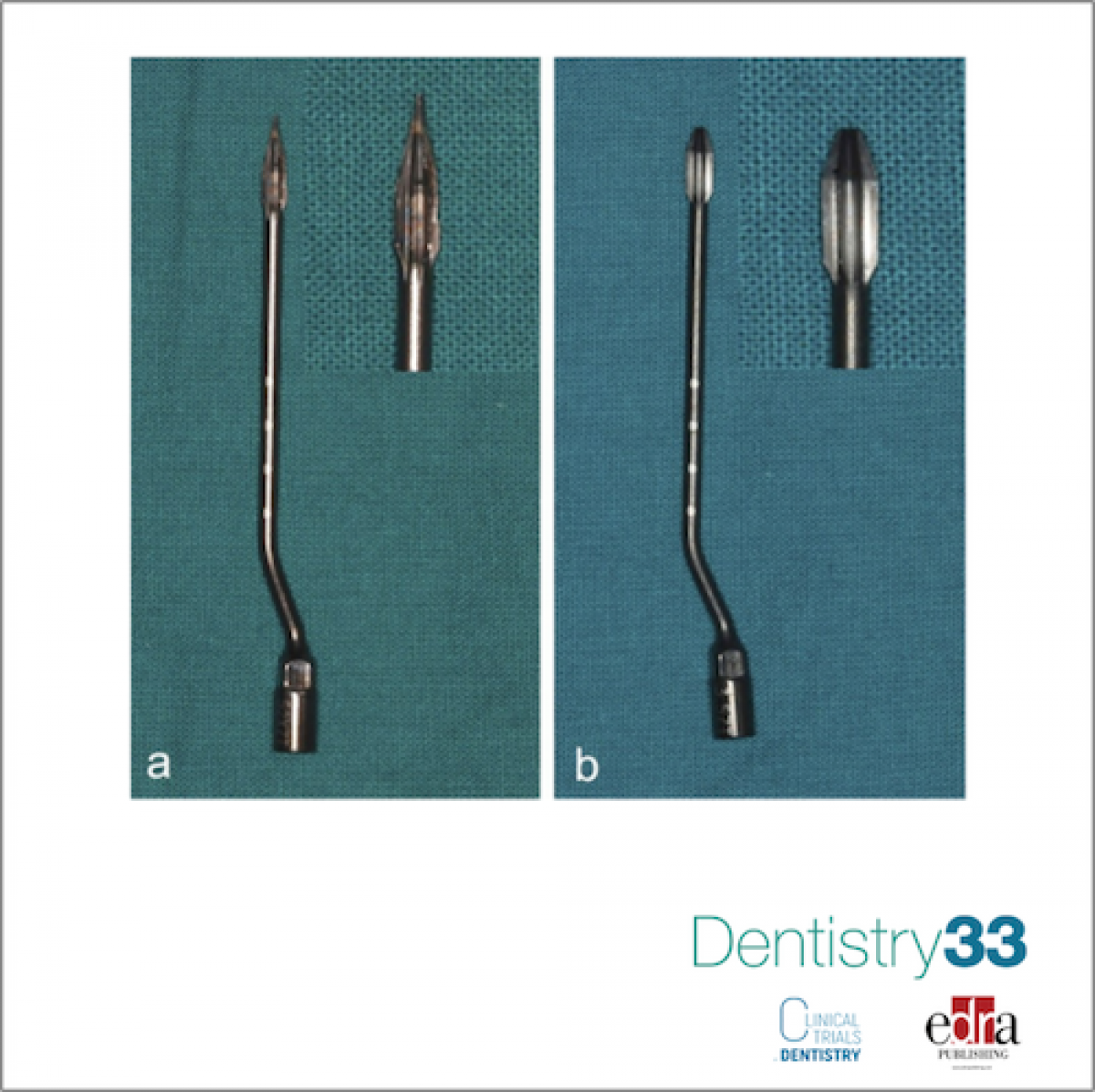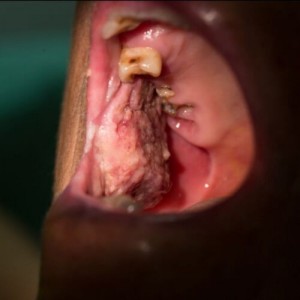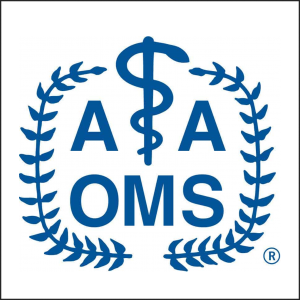
Conventional drills versus piezoelectric surgery preparation for placement of four immediately loaded zygomatic oncology implants in edentulous maxillae: 3-year results of a within-person randomised controlled trial
Authors: Roberto Pistilli, Marco Esposito, Carlo Barausse, Andrea Balercia, Lorenzo Bonifazi, Jacopo Buti, Pietro Felice
A within-person randomised controlled trial to compare the outcome of site preparation for two zygomatic oncology implants per zygoma using conventional preparation with rotary drills or piezoelectric surgery with dedicated inserts.
Materials and methods. Twenty edentulous patients with severely atrophic maxillae and insufficient bone volumes for placing dental implants with less than 4 mm of bone height subantrally had their hemi-maxillae randomised according to a within-patient study design into implant site preparation with either conventional rotational drills or piezoelectric surgery. Two zygomatic oncology implants (unthreaded coronal portion) were placed in each hemi-maxilla. Implants that achieved an insertion torque of greater than 40 Ncm were immediately loaded with provisional screw-retained metal-reinforced acrylic prostheses. Outcome measures were: prosthesis and implant failures, any complications, time to place the implants, presence of post-operative haematoma, and patient preference, as assessed by blinded assessors when possible. All patients were followed up for 3 years after loading.
Results. In two patients, drills had to be used in the piezoelectric surgery arm in order to prepare implant sites properly. One implant from the conventional drill group did not achieve an insertion torque of greater than 40 Ncm since the zygoma fractured. Three patients dropped out. Two distal oncology implants failed in the same patient (one per group), who was not prosthetically rehabilitated. Six patients experienced at least one complication at drilled sites and five at piezoelectric surgery sites (three patients had bilateral complications), the difference not being statistically significant (odds ratio = 1.5; P [McNemar’s test] = 1.0; 95% CI of odds ratio: 0.25 to 8.98). Implant placement with convention drills took on average 14.35±1.76 minutes vs. 23.50±2.26 minutes with piezoelectric surgery, the implant placement time being significantly shorter with conventional drilling (difference = 9.15±1.69 minutes; 95%CI: 8.36 to 9.94 minutes; P = 0.000). Post-operative haematomas were larger at drilled sites in 11 patients and similar at both sides in nine patients (chi-square = 20.4; df = 3; P = 0.0001), and 16 patients found both techniques equally acceptable while four preferred piezoelectric surgery (chi-square = 34.4; df = 3; P<0.0001).
Conclusions. Although these results may be system-dependent, and therefore cannot be generalised to other zygomatic systems with confidence, both drilling techniques achieved similar clinical outcomes. However, conventional drilling required 9 minutes less and could be used in all instances, though it was more aggressive.
 Related articles
Related articles
Piezoelectric surgery is a relatively new minimally invasive technique which has achieved popularity in many dentistry branch as implantology, periodontics and oral surgery. Piezosurgery is based on...
 Read more
Read more
Implantology 17 October 2025
To investigate whether cross-section imaging influences the planning and therapy of standard implant cases in the posterior mandible.
Editorials 17 October 2025
In her new role she is providing direction and supporting initiatives that elevating UFCD's translational research agenda.
Products 17 October 2025
Presto Dental, a new brand affiliated with the Abra Health Group, proudly announces the grand opening of its flagship Connecticut location in Bridgeport. This state-of-the-art.
News 17 October 2025
The American Association of Oral and Maxillofacial Surgeons (AAOMS) celebrated the achievements of more than 30 individuals at the association’s 107th Annual Meeting, Scientific Sessions and...
Phenom, an applied AI company that helps organizations hire faster, develop better, and retain longer, announced The Aspen Group (TAG) earned the Brandon.











